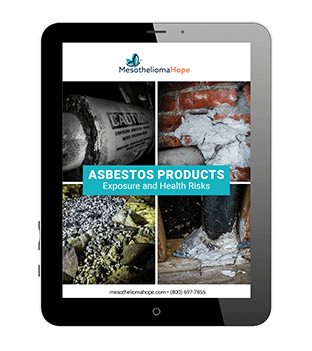Straight Talk about Mesothelioma, a blog series created by Michael T. Milano, M.D., Ph.D., a radiation oncology specialist, as a resource for mesothelioma patients and their loved ones.
In order to understand what sarcomatoid mesothelioma is, one must first understand the basics of mesothelioma. Mesothelioma – of any kind – is caused by exposure to asbestos. Asbestos is a fibrous, naturally occurring mineral that was, for decades, used in the manufacturing business to create many products, such as floor tiles, pipe wrap, and insulation. Inhalation of even one fiber can lead to the deadly and debilitating disease mesothelioma.
Most typically, asbestos fibers affect a person’s pleura, which is the thin membrane that lines one’s lungs. When a mesothelioma cancer develops, it can turn into 1 of 3 different forms: sarcomatoid, epitheliod, or a biphasic (mixed) type.
Sarcomatoid mesothelioma is the least common type of mesothelioma, accounting for 10-20% of all mesothelioma cases. Unfortunately, the sarcomatoid type is very resistant to cancer treatment. Sarcomatoid mesothelioma has a greater tendency to spread to other organs. At the time of diagnosis, most patients with sarcomatoid type mesothelioma have metastatic disease.
Inside the Body: What Sarcomatoid Cells Look Like
Under a microscope, the sarcomatoid cancer cells look spindle-shaped. They are narrow at both ends and wider in the middle. They are usually arranged on top of one another, like a stack. Sarcomatoid type tumors tend to form nodules (bumps) rather than plaques. The sarcomatoid mesothelioma is seen chiefly in the chest cavity and is quite rare in the abdomen.
Diagnosis for this rare type of mesothelioma is difficult because these cells can often be mistaken for other cells, but an expert pathologist will be able to make an accurate diagnosis.
What Are the Symptoms of Sarcomatoid Mesothelioma?
The symptoms of sarcomatoid mesothelioma are very similar to the symptoms seen in other mesothelioma cell types. Unfortunately, the initial symptoms of sarcomatoid mesothelioma are vague, but patients may complain of one or more of the following:
- Shortness of breath
- Cough
- Weight loss
- Chest pain
- Coughing up traces of blood
- Diminishing exercise tolerance
- General fatigue and weakness
- Abdominal pain
- Swelling
- No appetite or fullness
How Is a Diagnosis of Sarcomatoid Mesothelioma Made?
Patients undergo x-rays, CT scans, and even an MRI to find out where the tumor is located and its size.
A biopsy of the tissues is mandatory in order to make a complete diagnosis. The pathologist will stain the tissues and use special studies to determine the cell type. The diagnosis of sarcomatoid mesothelioma is challenging because under the microscope, the sarcomatoid cells appear similar to other cells in the body. Sometimes, the tissues are sent to a center with more experience to confirm the diagnosis. Several new markers (i.e. special tests that looks at the cells in a unique way) for the cancer have been developed, but they are not 100% sensitive; others markers are being developed and studied.
What Does the Treatment of Sarcomatoid Mesothelioma Entail?
The treatment of sarcomatoid mesothelioma depends on 1) the stage of the cancer and 2) the fitness of the patient. In general, if the cancer is localized and the patient can tolerate surgery, then the tumor is surgically removed. However, surgery is often difficult because these tumors can be rigidly attached to tissues – and thus are not easily able to be removed.
In many cases, during surgery it is determined that the tumor has unexpectedly spread to other sites that were not seen on imaging tests. In those patients, the surgery may be aborted (i.e. stopped before taking out the cancer). In patients with advanced cancer chemotherapy is often offered. In the past 2 decades, several new cancer drugs have been developed, but so far the survival rate has not been drastically improved for this rare type of mesothelioma.
What Is the Prognosis of Patients Who Have Sarcomatoid Mesothelioma?
These cancers are very aggressive and most patients have a poor prognosis, irrespective of the type of treatment. The only people who do somewhat better with this cancer are those who are diagnosed early. Sometimes, if the tumor is localized, it can be removed with surgery. This prolongs life and leads to a better overall quality of life. Most patients with sarcomatoid mesothelioma survive less than 6 months. A few patients survive longer.










